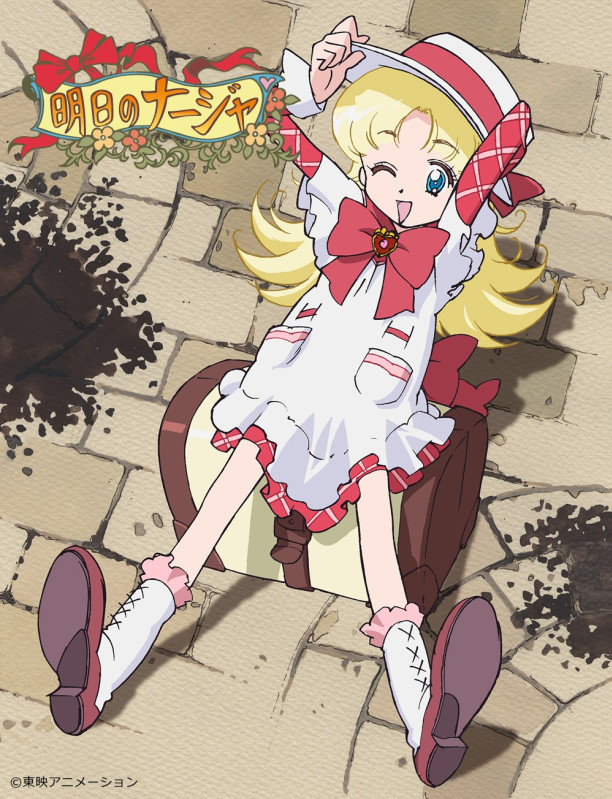
(According to MAL, this is my 570th completed anime!)
I say in a lot of my reviews that it often times doesn’t matter if a piece of media’s tropes and premises are cliche or overused, as these days, nothing is truly original anymore. There’s really nothing inherently wrong with cliches in and of themselves. It’s the execution that counts, and if you actually care about what you’re making and manage to create interesting characters and a solid, engaging premise, people will like it regardless of how cliche its premise is. After the end of the fourth Ojamajo Doremi season, Toei needed something to fill the timeslot up for the next year, and they decided, rather than another magical girl series, that they’d do a historical shoujo adventure instead, in line with stuff like Hello Sandybelle and Lady Georgie. That anime was Ashita no Nadja, which was an oddity in the year 2003, as by that time, according to Justin Sevakis’ article about the World Masterpiece Theater here, Japanese-produced shows that were set in Europe were going out of style. Which is honestly a shame, as even with the context Justin mentioned, a lot of these shows were quite amazing and made the most of what they were given. Nadja as a show is an original anime, not based on an existing property, making it even more of an oddity in 2003, and it did get admittedly low ratings from what I’ve heard, but the people who did stick around to watch it really liked it and have fond memories of it. I myself didn’t even know this show existed until I came across this review of it here on the site, and I did watch the first episode and liked it, but couldn’t finish it due to other obligations and because at the time of the blog post, the final quarter of the series didn’t get completed fansubs. This is no longer the case, thankfully, and I finally found time to watch this. And yeah, I agree, Ashita no Nadja has no business being this good and this well-written. More series should aspire to be like Nadja.
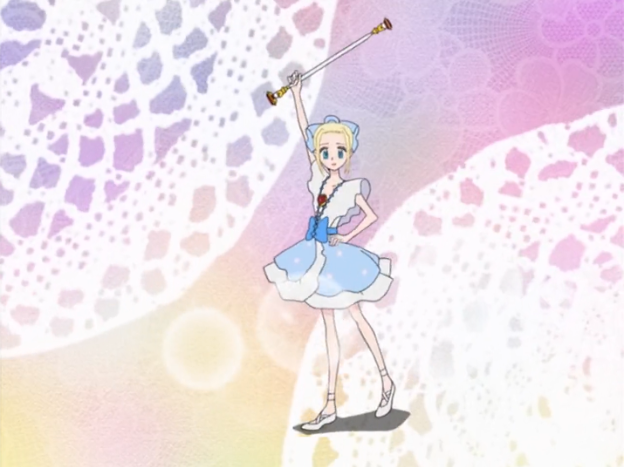
But what’s the story, you might ask? Taking place in the early 1900s, 12-year-old Nadja Applefield is an energetic, joyful girl living a happy life at an orphanage just outside of London. One day, her guardian, the director of Applefield House, gives her a suitcase full of luxurious things such as a dress, a diary, and an anonymous letter. Said letter drops a bombshell: Nadja’s mother, whom Nadja once thought to be dead, is actually alive and that she was unwillingly placed in the orphanage when her mother’s life was threatened by illness. Nadja barely has any time to process all of this, as the very next night, Applefield House is attacked by two burglars who are trying to steal Nadja’s prized brooch, which holds the key to her true parentage. Nadja is saved by a mysterious protector, but Applefield House almost burns to the ground. She does manage to find work at a traveling circus, the Dandelion Troupe, and with their help, Nadja travels all across Europe in the hopes of learning the secrets behind her brooch and hopefully reuniting her mother. But that’s easier said than done, as there are others who will stop at nothing to make sure Nadja never sees her mother, some of whom include members of her real family.
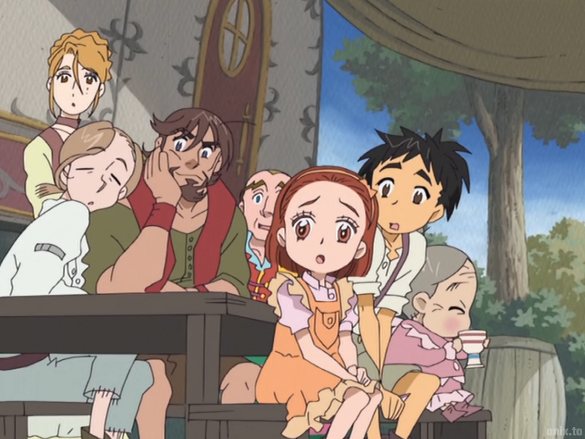
The base premise doesn’t exactly scream “Watch me!!” and in the wrong hands, this show could have turned out either really bad or just a soulless rehash of other stuff of a similar nature that had come out before it. But the staff behind this anime turned out to be exactly what Ashita no Nadja needed. The first half of the series is fairly light-hearted and episodic, with Nadja and the troupe traveling across Europe, meeting interesting people, and helping them out whenever possible. The second half is where Ashita no Nadja as a series really shines, in which the overarching plot really kicks into high gear, manages to remain engaging throughout, delivers on all of the build-up, and the characters all undergo fantastic development. This is a series that absolutely knows what it wants to do and manages to deliver in every way possible. I especially need to sing praises for the villains in particular, who turn out to be far from your stereotypical cartoon villains who are just there to be incompetent idiots who can’t do anything right. Most kids shows have the villains always lose against the heroes. Without giving away spoilers, the villains come up with a fairly simple plan to keep Nadja from meeting her mother, but not only do they actually succeed in their machinations, they manage to do so multiple times, and their schemes aren’t the overly complicated kind that you’d find in stuff like Death Note or Sword Art Online. The fact that the villains succeed in their endeavors is actually shown to have palpable consequences for the heroes, but those consequences still manage to make sense when you take into account the setting and time period, so it never feels like it’s trying to make things more convenient for itself. These scriptwriters really put a lot into making the story make sense from a logical standpoint while still having it be solid and engaging throughout, making sure every plot thread is consistent and followed up on. It helps that both the light and dark elements of the show manage to blend together wonderfully, and without leaning too heavily on one or the other.
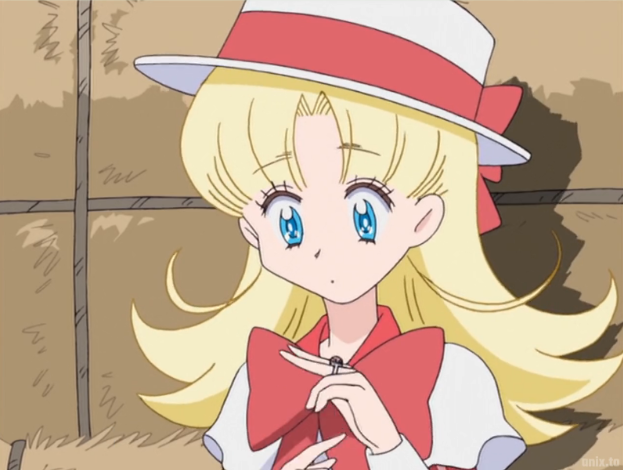
For all the praise I just gave the villains, that’s not to say our main cast of characters aren’t worth giving flowers to. Every character from everyone in the troupe to even people who only appear in one episode are given their time in the limelight, have multiple sides to them, and feel fresh. Nadja in particular is a great character to follow, as while she is your typical cheerful girl who inspires people and gets along with everyone, she isn’t shown as being perfect, and her cheerfulness is never taken to the sometimes saccharine levels of some Pretty Cure leads that would come later. Her trusting nature gets her into trouble plenty of times, and she can be childish and sulky at times, as is typical for any 12-13 year old kid her age. I saw another reviewer claim that Nadja comes off as more of a reactive, passive protagonist than an active one, and personally, I don’t think that’s true. Sure, there are times when Nadja gets in bad situations, and a lot of the time she does wind up getting saved by others, but there are just as much moments where Nadja does things herself and succeeds, so it’s not like she’s just a damsel in distress who gets dragged around by everybody else, especially one on the level of, say, that pink haired girl from Guilty Crown. I’d argue that Nadja is more like Liko from Pokemon Horizons in that while she doesn’t do a whole lot because of both her age and lack of experience and knowledge of the world outside her orphanage, a lot of the major decisions in the anime are still up to her and she does step up when she sets her mind to something.
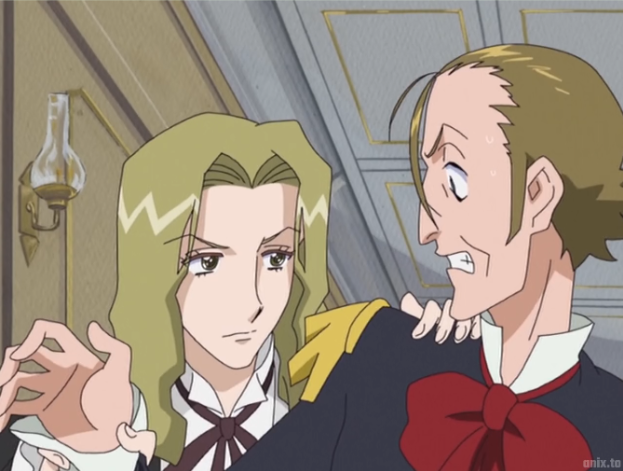
On the more technical front, the animation is your standard Toei fare, complete with its good and bad points. The character designs by Kazuto Nakazawa are unique and vibrant, with no two characters looking the same (Except for one instance that’s intentional), and the actual animation fluctuates quite a bit. Some times the animation is kinetic and smooth, other times it re-uses stock footage of Nadja dancing because they don’t want to animate new dance sequences each time. Remember in my Digimon Adventure review, I mentioned that sometimes, during a scene, the background characters are drawn with thick lines and whenever a prominent character is moving or zoomed out, they’re animated with thin outlines that make it look like they don’t blend well with the scenery? Nadja has this problem too. Let’s not forget the frequent uses of CGI that clash very heavily with the 2D animation and just look…off. CGI ballroom dancers, really? But those are the only real problems animation-wise, as everything else is fine. The backgrounds are well drawn, and it’s clear that the staff at Toei put a lot of care into researching Europe during the early 20th century and how it looked back then, even if not everything about it is accurate. One thing I noticed about the soundtrack is that its very reliant on classical music a lot of the time, even using public domain music such as Offenbach’s Infernal Gallop/Orpheus In The Underworld aka the Can-Can, which is used several times throughout the show, along with Johann Strauss’ Blue Danube Waltz. I’m pretty sure there are other ones I don’t recognize. The actual soundtrack for the show is pretty good, and both the opening and ending songs are fun, upbeat tunes that fit the show perfectly.
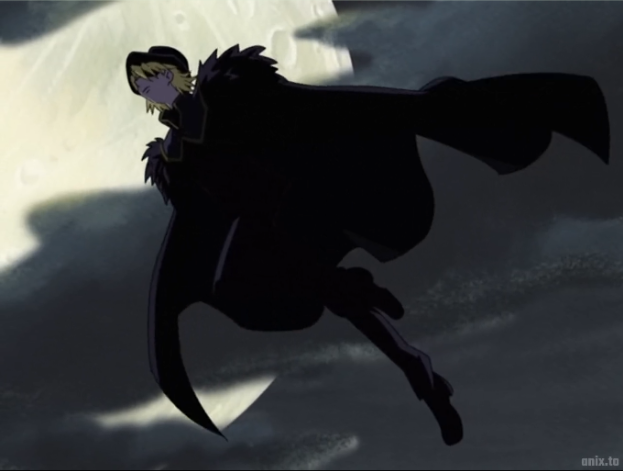
But for as much as I want to praise Nadja up the wazoo, the show isn’t perfect. For one, there are several aspects of the show that haven’t aged well. In particular, two of Nadja’s primary love interests are adult men, and there are a bunch of other adults who find themselves falling for Nadja, who is a 13-year-old girl. I don’t think I need to go into this one. To be fair, it only goes as far as Francis kissing Nadja (And someone else but that’s a spoiler), that’s it, but it can still be a little uncomfortable. There’s also one episode, episode 14, that has the rather…very sexist, very outdated, and very Japanese moral of “Tomboys need to be feminine in order to be accepted by society!” Also, Nadja always seems to meet the right people wherever she travels, especially in big cities where it’d usually be pretty unlikely to run into someone you know unless you’re looking for them, and the series always has whoever she needs to meet with happen to be in the neighborhood. A little too convenient if you ask me, and it happens a lot throughout the show. Though to be fair, with how good the writing and story progression is already, the producers did have good intentions and made great use of what they were given to work with, so it wasn’t like those conveniences were thrown in there for cheap plot-twists.
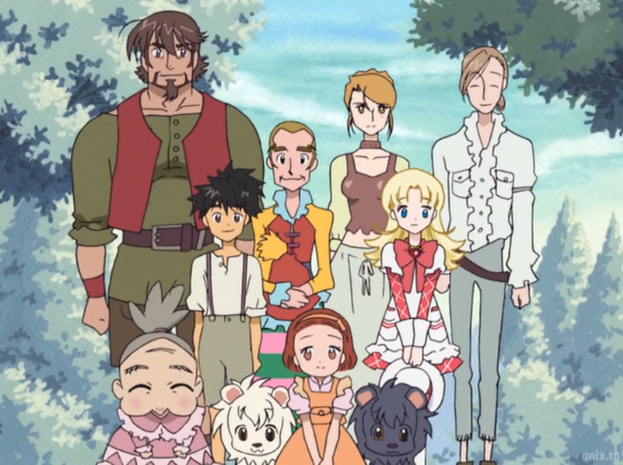
It’s easy to see why people who watched Ashita no Nadja way back when love it so much. It’s an incredibly solid series that manages to excellently deliver on build-up, characterization, and story progression, and ending with a conclusion that manages to be believable and satisfying while pushing the characters further. What flaws it has didn’t kill my own enjoyment of the series any. Seriously, Toei, why don’t you make more shows like this more often? The series celebrated its 20th anniversary recently, and a few years back, it even got a sequel novel that takes place a few years after the events of the series…though from what I’ve heard, the direction it takes some of the characters is rather suspect. Overall, I found Ashita no Nadja to be a fun, charming, pleasant ride from beginning to end, and hopefully more people will see it and give it the love it deserves. I kind of wish I had seen this when I was a child. I probably would have loved it. Here’s hoping a certain company picks it up for a home video release in North America. Yoohoo, Discotek!! Oh, one other thing: DO NOT watch those two English-dubbed compilation movies, because they’re just slap-dash mish-mashes of random episodes, and apparently the actual English dub is really bad. Stick to the series, as it’s much more worth your time.

The art style and designs reminds me of princess Tutu